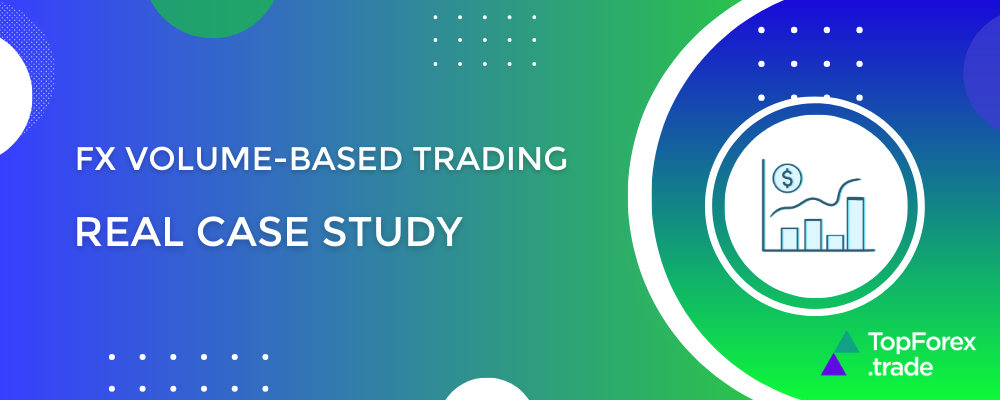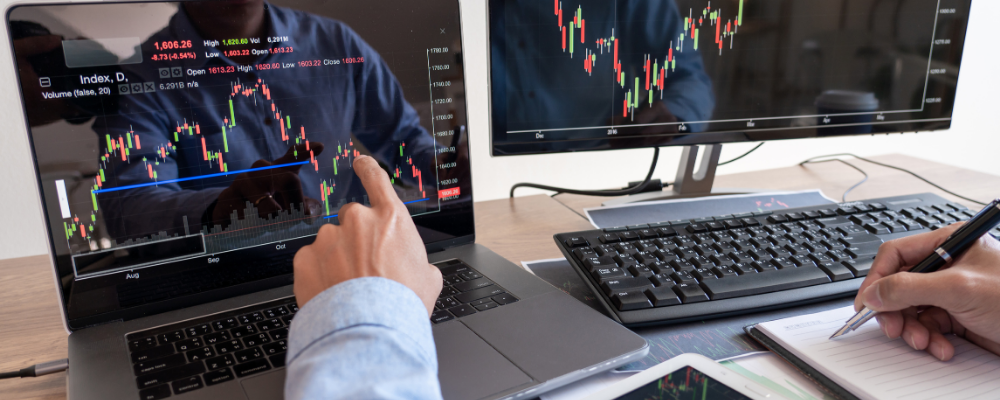Best Forex brokers for volume-based trading and pro strategies

Volume-based trading in Forex is a strategy that relies on trading activity levels to make informed decisions. Unlike stock markets, where real transaction volume is available, Forex traders use indicators like tick volume, On-Balance Volume (OBV), and the Volume Weighted Average Price (VWAP) to gauge market sentiment. In this article, we’ll explore what volume-based trading is, key indicators, practical examples, and a real-life case study to see how it works in action. Plus, we’ll highlight the top FX brokers that support volume-based strategies.
What is Forex volume-based trading?
Forex volume-based trading is a strategy where traders analyze trading activity levels (volume) to make trading decisions. In stock or futures markets, traders can see the actual number of contracts bought and sold. However, since Forex is decentralized (not traded on a single exchange), there is no official volume data. Instead, Forex traders use tick volume—the number of price movements in a given time frame—as a proxy for real volume.
Why is volume important?
- It helps confirm trends (strong volume = stronger trend).
- It can indicate potential trend reversals.
- It helps validate breakouts and avoid false signals.
How Forex volume-based trading works

To understand volume-based trading, consider this simple rule:
High volume = strong market interest
Low volume = weak market participation
How traders use volume in Forex
1️⃣ Confirming a trend
- If a currency pair is rising and volume is increasing, the trend is strong.
- If price rises but volume remains low, the trend may not last.
2️⃣ Identifying a trend reversal
- If volume drops while the price continues in one direction, it signals that buyers/sellers are losing interest, possibly leading to a reversal.
- If price changes direction with a spike in volume, it confirms a trend reversal.
3️⃣ Spotting breakouts and fakeouts
- If price breaks above a resistance level with high volume, it confirms a genuine breakout.
- If price breaks out with low volume, it may be a false breakout (fakeout).
Key volume-based technical indicators and how to use them
Tick Volume (basic volume indicator)
Since Forex lacks real transaction volume, traders use tick volume (how many times price changed in a period).
How to use:
- If tick volume is rising along with the price, the trend is strong.
- If price rises but tick volume is low, the movement is weak and may reverse.
On-Balance-Volume (OBV) (trend strength indicator)
OBV adds volume on up days and subtracts volume on down days.
How to use:
- If OBV is rising along with price, the trend is strong.
- If OBV is falling while price is rising, it indicates weakness and a possible reversal.
Volume Weighted Average Price (VWAP) (trend confirmation tool)
VWAP calculates the average price of an asset based on volume.
How to use:
- If the price is above VWAP, the trend is bullish.
- If the price is below VWAP, the trend is bearish.
Accumulation/Distribution (A/D) Line (smart money indicator)
Shows whether traders are accumulating (buying) or distributing (selling) an asset.
How to use:
- Rising A/D = buyers in control (bullish).
- Falling A/D = sellers in control (bearish).
Chaikin Money Flow (CMF) (buying vs. selling pressure)
Measures whether money is flowing into or out of a currency pair.
How to use:
- If CMF is above 0, it means buying pressure is strong.
- If CMF is below 0, selling pressure is stronger.
Real Forex volume-based trading case study

Case study: using volume indicators to trade EUR/USD
Let’s look at how a trader uses volume-based trading in a real-world scenario.
✍ Scenario:
A trader is analyzing EUR/USD on a 4-hour chart and notices:
- Price is rising, but OBV is not increasing.
- VWAP is above price, showing the trend is losing strength.
- A sudden price drop happens with a spike in tick volume.
Trade decision:
📌 The trader enters a short position (sells EUR/USD).
📌 Sets a stop-loss just above the VWAP line.
📌 As price continues to drop, the trader closes the trade with profit.
Key takeaways:
- The OBV divergence helped spot a weakening trend.
- VWAP and tick volume confirmed the bearish move.
- Combining volume indicators with price action improved the trade accuracy.
Best Forex brokers for volume-based trading
Not all brokers provide quality volume data. Here are the top brokers that offer advanced volume tools, low spreads, and fast execution:
HF Markets (HFM)
🔹 Provides real-time tick volume and MetaTrader 4/5 support.
🔹 Best for traders using OBV, VWAP, and tick volume strategies.
Exness
🔹 Offers deep liquidity and volume-based trading insights.
🔹 Best for traders using scalping and day trading strategies.
AvaTrade
🔹 Supports volume indicators with MetaTrader and TradingView.
🔹 Good for beginners using VWAP and OBV.
BlackBull Markets
🔹 Institutional-grade trading with advanced volume-based tools.
🔹 Best for professional traders using volume-based strategies.
eToro
🔹 Features Social trading and volume analysis tools.
🔹 Best for traders who want to learn from top traders.
Risk disclaimer: eToro is a multi-asset platform which offers both investing in stocks and cryptoassets, as well as trading CFDs.
CFDs are complex instruments and come with a high risk of losing money rapidly due to leverage. 61% of retail investor accounts lose money when trading CFDs with this provider. You should consider whether you understand how CFDs work, and whether you can afford to take the high risk of losing your money.
This communication is intended for information and educational purposes only and should not be considered investment advice or investment recommendation. Past performance is not an indication of future results.
Copy Trading does not amount to investment advice. The value of your investments may go up or down. Your capital is at risk.
Don’t invest unless you’re prepared to lose all the money you invest. This is a high-risk investment and you should not expect to be protected if something goes wrong. Take 2 mins to learn more.
eToro USA LLC does not offer CFDs and makes no representation and assumes no liability as to the accuracy or completeness of the content of this publication, which has been prepared by our partner utilizing publicly available non-entity specific information about eToro.
Related articles:
Forex volume-based trading - FAQ